Red Cabbage Sauerkraut with Onion
Yield: 1 quart
1 head red cabbage
¼ sweet or red onion, thinly sliced
1 tablespoon unrefined sea salt
1 clean wide mouth quart jar and lid
1 small mouth pint jar lid
- Quarter the red cabbage. Chop, grate, or thinly slice the cabbage, finely or coarsely, with or without hearts. You can also use a mandoline for perfectly thin slicing. Place cabbage in a large bowl as you chop it. (See photos below.)
- Sprinkle the salt on the cabbage as you go. The salt pulls water out of the cabbage through osmosis, and this creates the brine in which the cabbage will ferment and sour without rotting. The salt will also keep the cabbage crunchy.
- Add the onion and toss it all together so the salt is well distributed. Let sit for a few minutes to let the water start seeping out of the cabbage. Using a kitchen mallet and holding it with a fist, start pounding and tamping the cabbage vigorously. Do this for a few minutes. You could also use a wooden sauerkraut stomper.
- Stuff the jar about half way full of cabbage and continue pounding and tamping it down, this time using a wooden pestle. It won’t seem like all the cabbage in the bowl will fit into the jar but if you continue adding cabbage and pounding, you should be able to get most if not all the cabbage in the jar, depending on how big the cabbage was.
- Add more cabbage, tamping down as you go, until the jar is full and the cabbage is covered with its own liquid. You will see more and more liquid developing and you want the cabbage completely covered with liquid. This is good, because then you won’t have to add any brine, which will make a less crunchy final product. If the cabbage is older and has dried out somewhat, you may not get enough liquid to cover the kraut. If this happens, stir together a cup of water with 1 teaspoon salt and add just enough to cover the cabbage.
- Place a small mouth jar lid (not the band) onto the liquid and press down until it is submerged. Screw the cover on the jar loosely and let sit on the counter. Check it every day to make sure the small lid is keeping the cabbage covered with liquid. Sometimes the water continues to seep out of the cabbage and the jar may overflow. So you may want to put the jar on a plate or in a pan to catch overflowing brine. After a few days, taste the cabbage. It only takes a few days to turn tangy. You can leave it out for 1 to 3 weeks. It will culture more quickly in the summer when it’s warmer. Skim off any scum you see as it’s culturing but don’t worry about it. When it tastes good to you, transfer the jar to the refrigerator and enjoy.
You can experiment and flavor your kraut with other ingredients like apple, ginger, carrots, curry, caraway seeds, dill, etc.
The Kraut Making Process
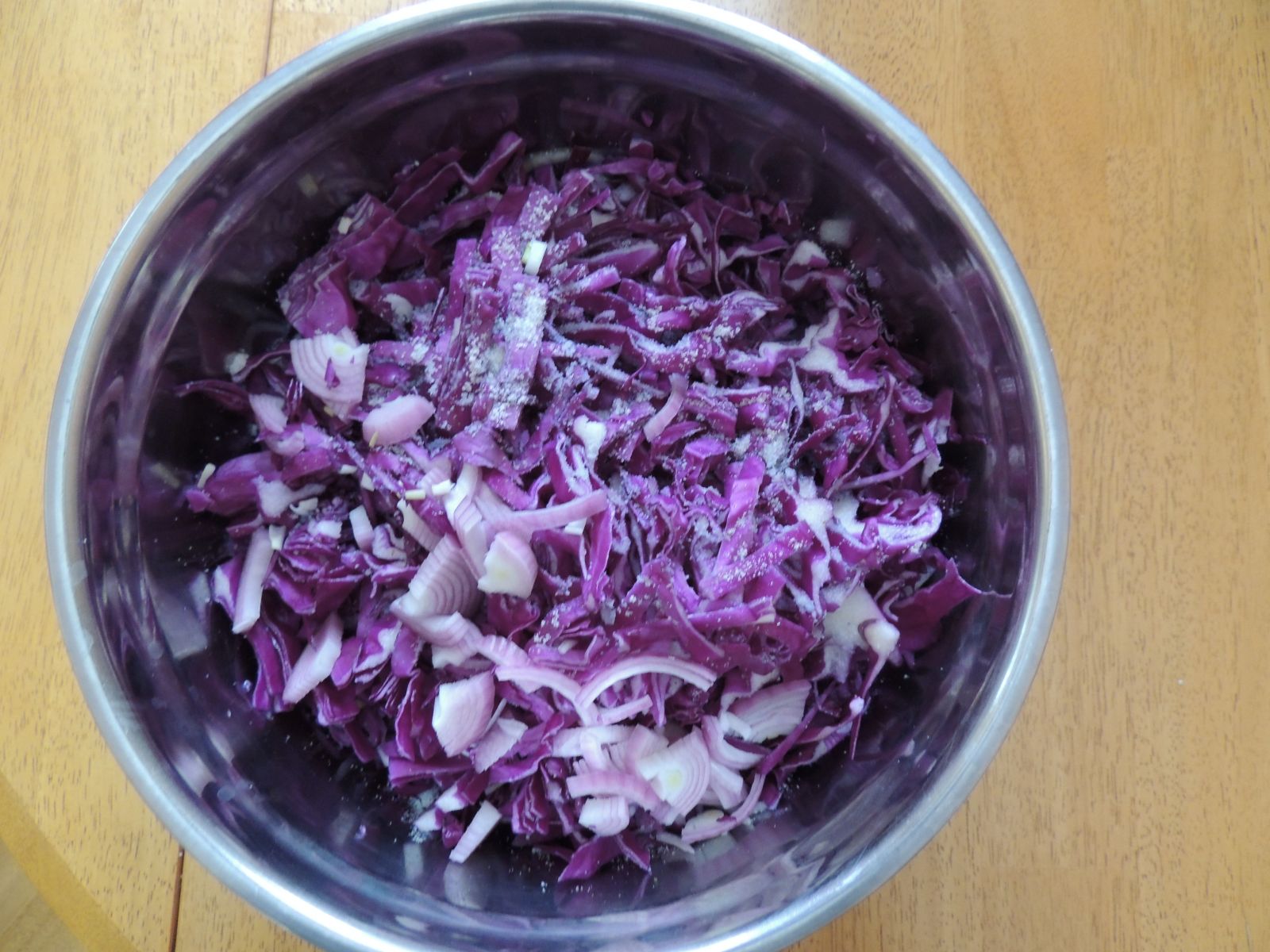
Just sprinkle the salt on the cabbage as you go.
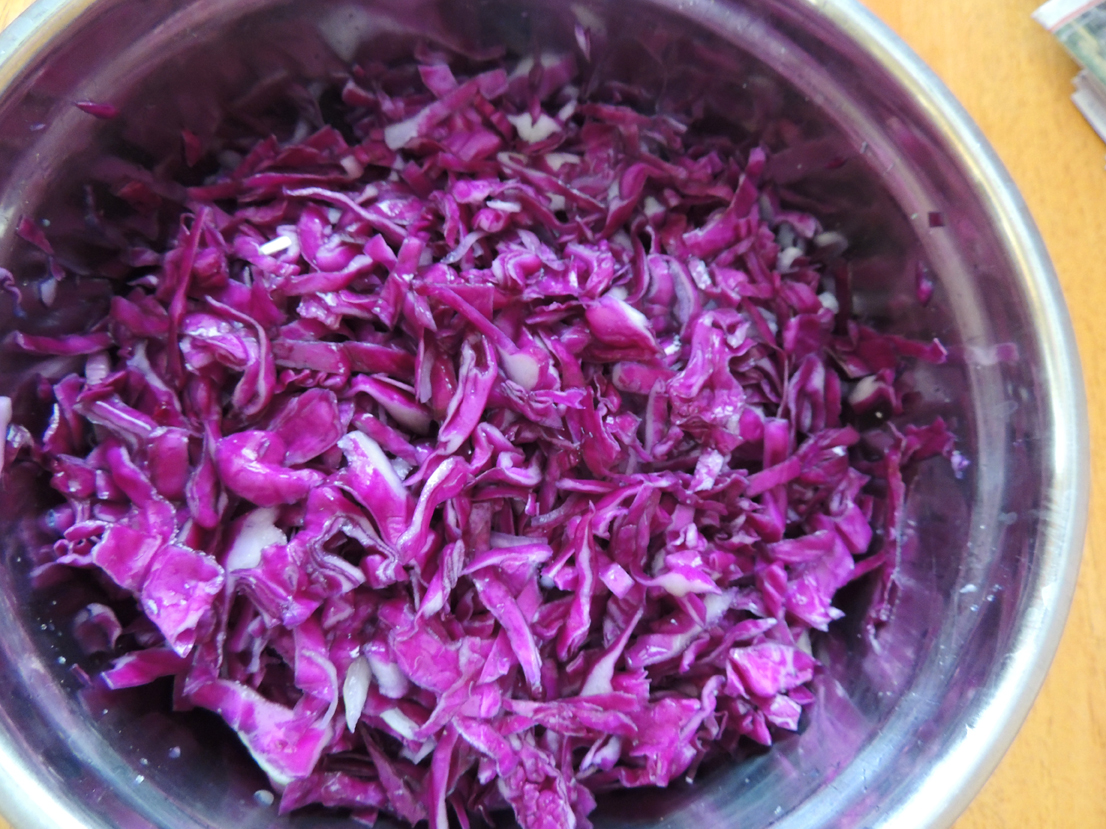
The water is starting to seep out of the cabbage after a few minutes.
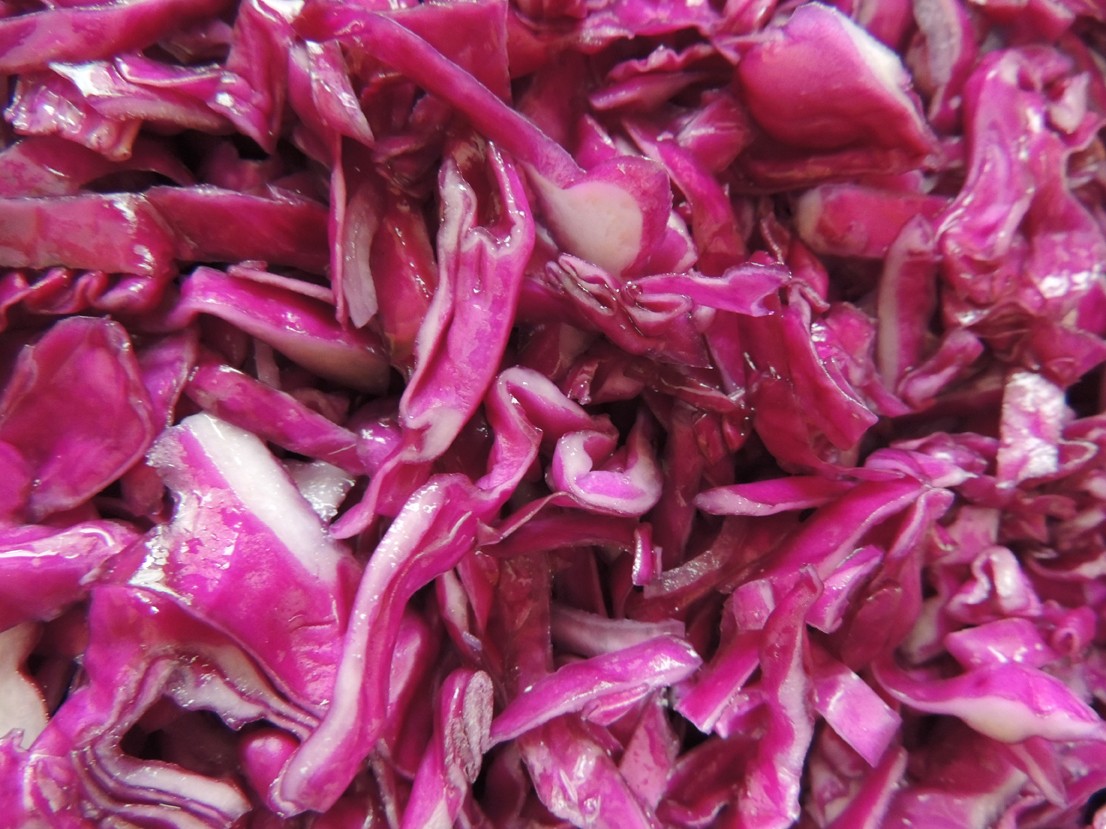
The salt continues to draw water out of the cabbage.
.jpg)
Useful kraut making tools: wooden kitchen mallet and wooden pestle. You can see how an entire head of cabbage fits inside a quart jar. Amazing.
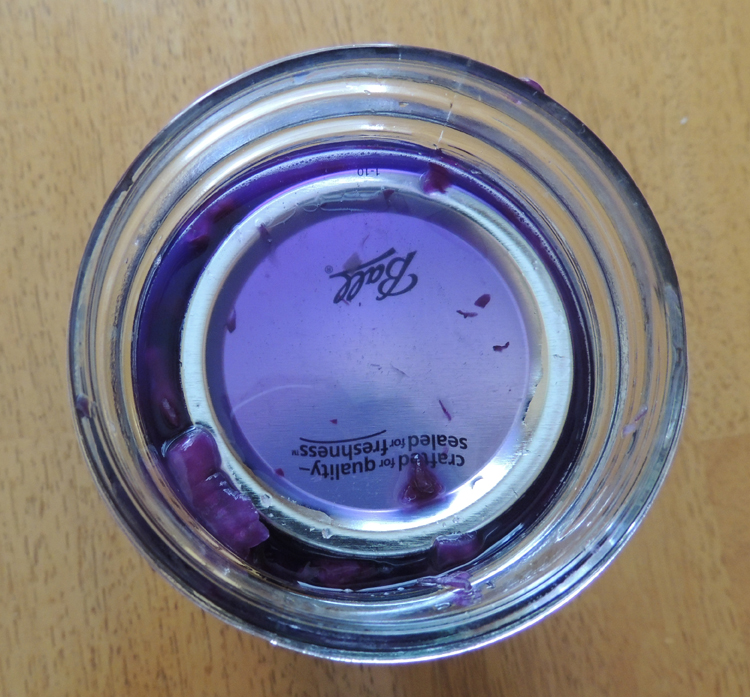
The small mouth jar lid fits conveniently inside a wide mouth quart jar to hold down the cabbage. You could add a small rock or glass weight to keep it submerged, or just check frequently and keep pushing it down to keep the cabbage completely covered.
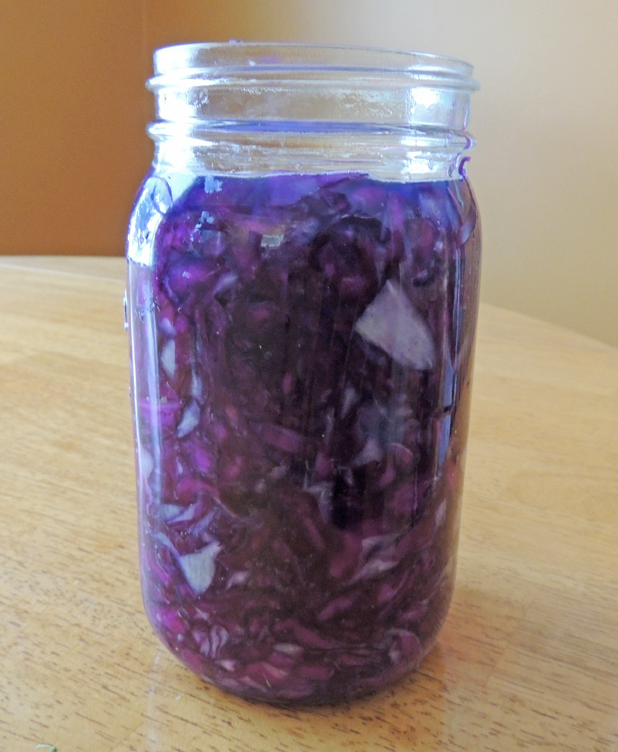
The jar is ready to work its magic on the contertop for at least a week. Don’t forget to cover and make sure cabbage stays submerged.